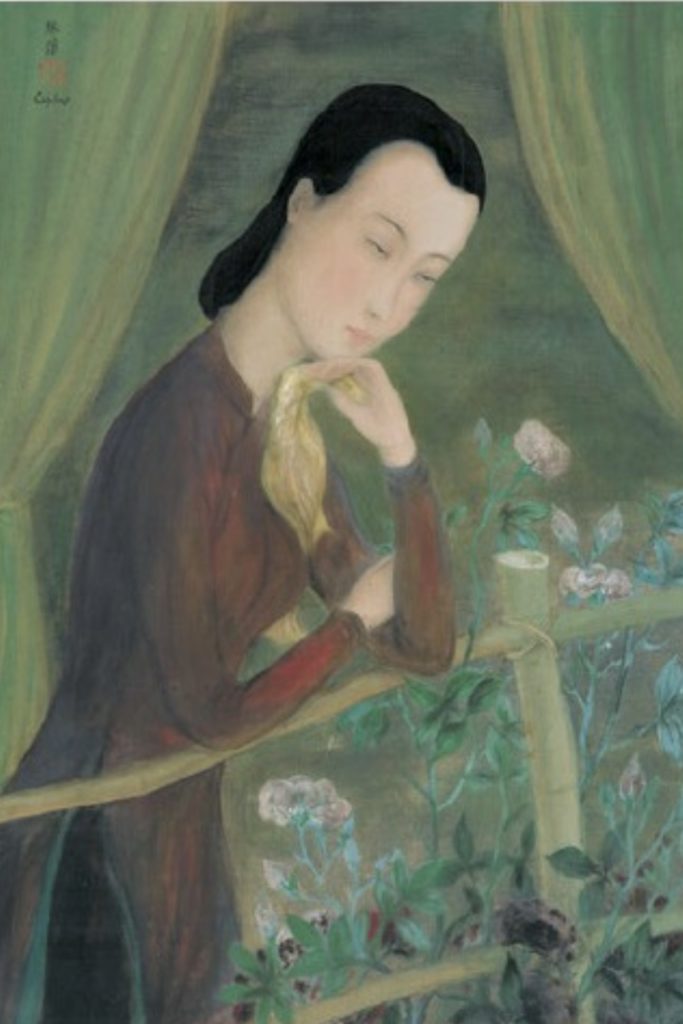Le Pho, « La Femme Aux Rosiers » (The Woman With Roses), circa 1940, or the incredible sweetness of being
Our gouache and ink on silk of beautiful dimension is remarkable by the extreme softness which emerges and, by the painter’s technical virtuosity at his peak.

Everything radiates a rare elegance found in all aspects in the painter himself.
Starting with the face, it displays a careful affirmation that the urban Vietnamese woman acquired during the 1930s in the spirit of Tu Luc Van Doan, an emancipatory movement in which a good number of students or graduates of the Hanoi School of Fine Arts participated, including Nguyen Gia Tri, Nguyen Cat Luong, the inventor of modern ao dai and… Le Pho.
The purple ao dai, the plucked eyebrows, the lipstick, the discreet make-up, all visible signs of emancipation from the Confucian world in this graceful young woman.
A world that Le Pho challenges.
Yet coming from the mandarin world, he knows there are no social and mental order for an artist, disorder is only order with no power. To contest the cultural norm, means confrontation, instability, doubt, refusal of dogmatism. All this with distinction. Such are the elements necessary an expression of talent.
In 1937, he settled in Paris where he found the freedom he claimed in Hanoi after his first stay in 1931-32. That is when he painted “La Femme aux Rosiers”.
She frees her neck by holing the scarf in her hand, the young woman leans, looking pensive. She is leaning against a simple bamboo fence that separates us from her and the curtain in the background. Le Pho paints her body and face, more elongated, stylistic premises of the late years and early 40s. The title of the work, written on the back, is no indifferent: Le Pho takes particular care in the representation of these roses, white almost diaphanous, some in bloom and more so others in bud. He knows that the white rose in what is still his adopted country is a symbol of purity but also of refinement, like this woman.
It is very significant that Le Pho chooses the rose that even the Kim Vân Kiêu of Nguyên Dû (1765-1820) and its three thousand verses do not mention once, when chrysanthemums, orchids, lotuses, tuberoses, apricot, peach and pomegranate flowers abound. Choice of a painter who, in the name of this flower imported to Vietnam during the colonial era, chooses a new homeland and remembers Stefan Lochner (circa 1410-1451) whose “Madonna with the Rose Bush” he admired at the Wallraf-Richartz Museum in Cologne in 1932.
A rustic barrier, a subtle flower, like a base for this woman with an assumed modernity, beautiful in its contrasts. All of Le Pho’s themes are present in this subtle painting, magnificently served by the artist’s choice of gouache pigments in more pastel tones than usual. They give this exceptional work its ethereal atmosphere and this face and these hands of woman in glaze very rare in the work of the painter.
An incredible softness of being to which the painter will pay homage, tirelessly all his life.
Jean-François Hubert